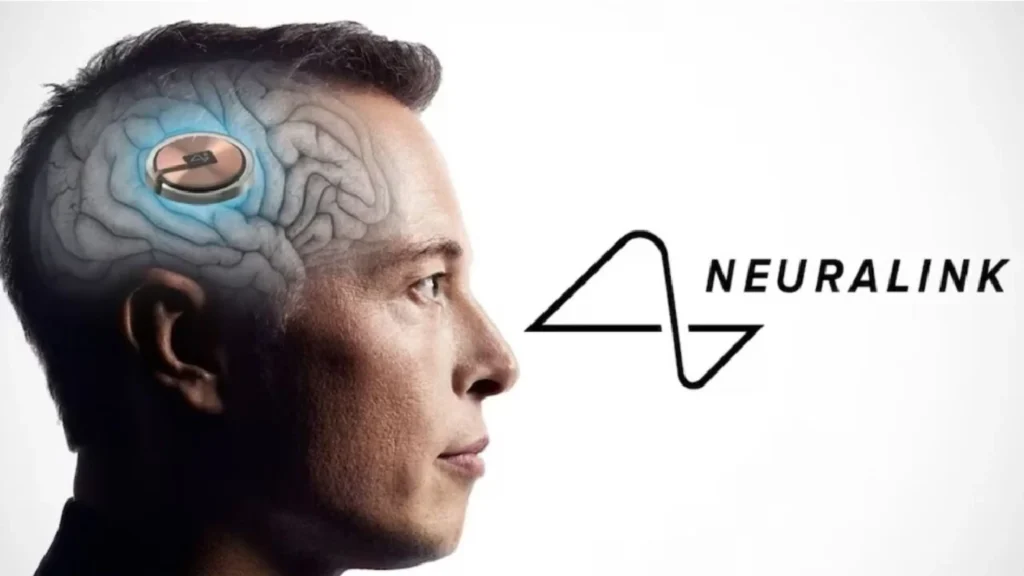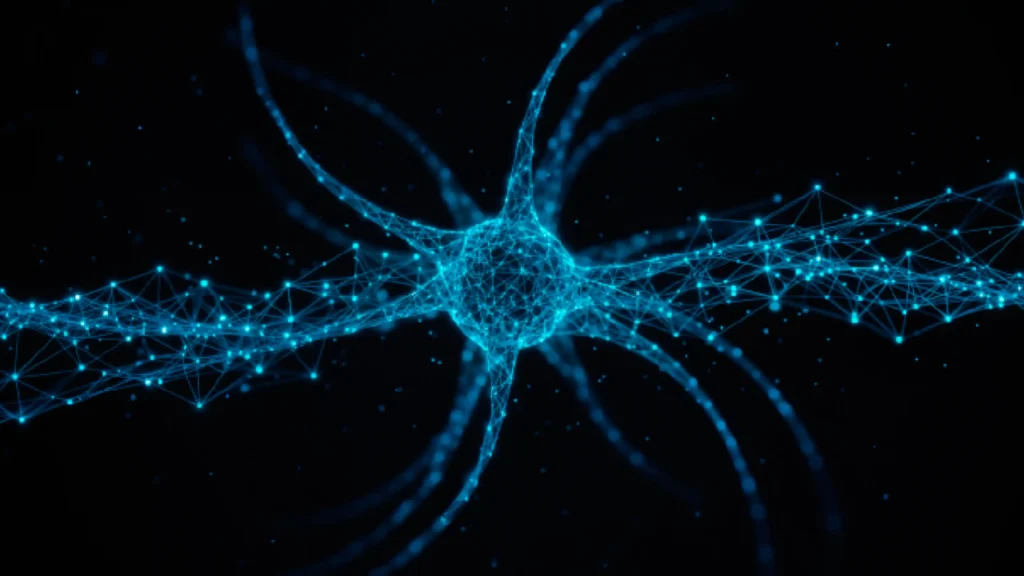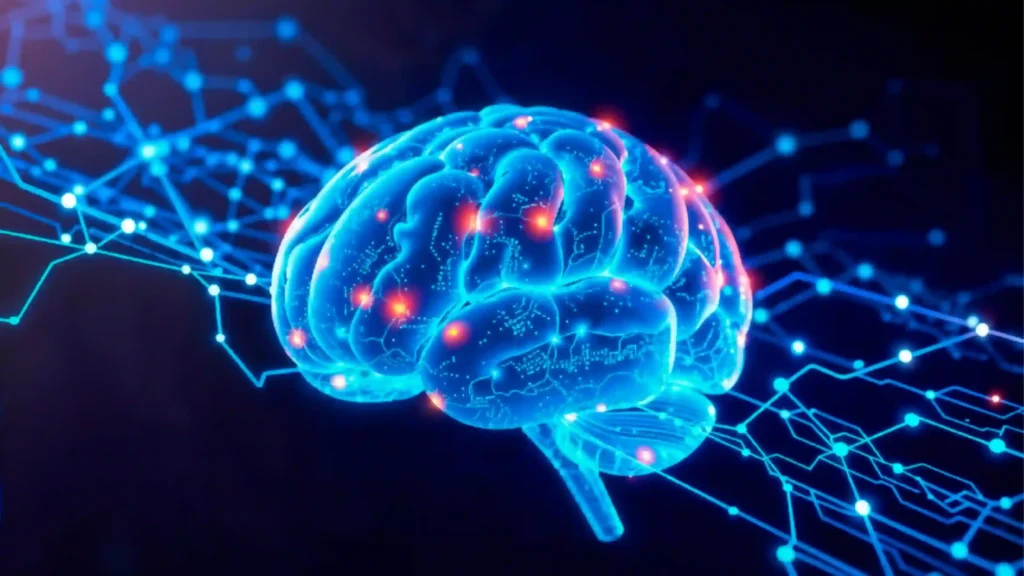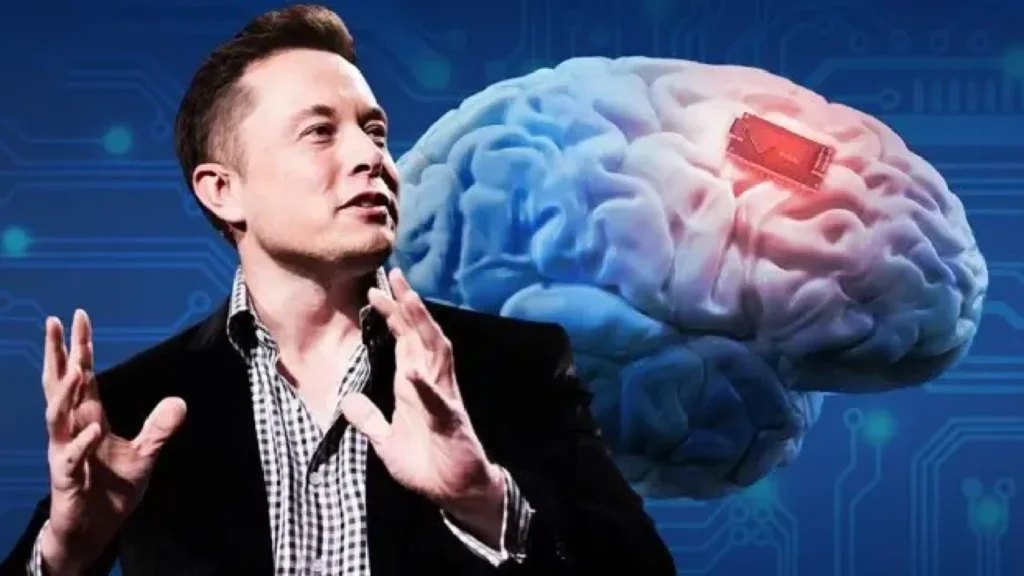Neuralink Brain Chip technology, developed by Elon Musk and his team, is focused on creating high-bandwidth BMIs. Founded in 2016, the company sought to develop a brain chip that would enable a direct brain-to-device interface with numerous applications in the medical and cognitive fields. Neuralink was able to achieve a great breakthrough when significant development occurred with Elon Musk announcing that “Neuralink had successfully implanted an electronic device, called Telepathy N1 or ‘the Link,’ into the brain of a disabled individual”. The announcement was made on January 29th, 2024, and marked the first human implant the company made under its PRIME study that was approved by the US Food and Drug Administration (FDA) the year before.

Table of Contents
The Technology Behind the Implant
Neuralink works by implanting arrays of tiny, flexible electrode strands. These threads, thinner than human hair, are implanted by a dedicated neurosurgical robot with micron precision so as to carve a path that avoids the surface vasculature and targets the brain region of interest with minimum damage to intact neural tissue. Each single thread might have dozens of electrodes. According to a white paper published in 2019 (written by Elon Musk himself), arrays had up to 3072 electrodes on 96 threads. The electrode array interfaces to a very small implantable unit containing custom chips for low-power on-board amplification and digitisation; for 3072 channels, this package measures under 23×18.5×2 mm³.
The Neuralink ASIC (application-specific integrated circuit) was also designed to be capable of electrical stimulation on every channel, though these features were never demonstrated in the initial paper. The device is said to be fully implantable and “cosmetically invisible.” Initial tests on chronically implanted electrodes yielded a spiking yield of up to 70%. While public data about the technology reveals very little, the main approach is to insert ultrathin threads directly into the brain while a robot performs the implantation with pinpoint precision. It streams full broadband electrophysiology data via miniature custom electronics.
The First Human Trial (PRIME Study) of Neuralink Brain Chip and Initial Results
The PRIME study aims to test a brain implant for paralysed persons so that they can think to control external devices. The scientific rationale behind it is that electrodes inserted in the cortex record neuronal activity for the intention to move, translate it, and wirelessly transmit it via the chip. Users can thus control devices with just their thoughts, through recording and decoding neural signals and transmitting signals back through electrical stimulation.

After the first human implantation on January 29, 2024, initial results have shown “promising neuron spike detection.” The first patient is a disabled individual with quadriplegia. The device inserted into the human brain is called “the Link” or “Telepathy N1.” Details about the procedure and results have been given in a very limited manner from the start, and most of what is known has mainly come from company communications and Musk himself. Researchers suppose the company will probably end up testing performance, durability, and user experience, as replacing electrodes after implantation is unlikely, and a five-year initial trial is scheduled.
Clinical Potential and Context
BMIs have been in consideration for many decades, the first one for a human patient having been carried out in 1998. There have been demonstrations by other researchers whereby human patients were shown to neuroprosthetically control computer cursors, robotic limbs, and speech synthesizers with fewer channels than the system of Neuralink. Examples include a “digital bridge” that allowed a paralysed man to walk again by connecting his brain signals to his spinal cord.
Though not absolute pioneers, Neuralink’s technical innovations, which include miniaturising the intracranial device, having a vast number of thin microelectrodes, and robot-assisted implantation, very much place the company at the forefront of this research. The technology could help with several clinical problems. Therefore, neurological disorder applications of Parkinson’s could be controlling exoskeletons and prosthetics, or perhaps even sensory feedback such as touch or proprioception for neuroprosthetic control. In November 2024, Neuralink announced the CONVOY Study, aimed at feasibility trials to extend N1’s capabilities to controlling assistive robotic arms.
Animal Trials and Associated Criticism
The company ran experiments on pigs, monkeys, and other animals before human trials began in 2017. The experiments demonstrated control of computer cursors with brain signals. The results were promising, but so were certain issues: paralysis and seizures had been reported in previous trials involving monkeys and pigs. Neuralink’s animal testing program has undergone scrutiny and criticism. Law enforcement investigators and the USDA watchdog went after the company for potential animal-welfare violations. Animal rights groups such as PETA and PCRM have condemned Neuralink’s studies.

Ethical Concerns and Ongoing Debate
Neuralink’s advancements have sparked significant debate surrounding critical clinical, ethical, and regulatory questions.
- Safety and Long-Term Effects: It remains a matter of concern to determine whether an implanted device will be safe. Thus, one needs accurate and truthful information regarding its proper functioning, possible medium- and long-term side effects, signal quality, operational life, and the user experience. Other factors concerning its removal or replacement, the chance that it would suddenly stop working to the detriment of the user, or harm caused to a third person, could also be weighed in. In 2022, the FDA refused to grant permission for clinical human trials due to an insufficiency of details concerning the possible effects of the implant on human anatomy.
- Transparency and Research Ethics: Transparency and research ethics have been questioned, with such examples as communicating through media, while significant developments are typically announced to the scientific community through a press release. Not registering the first clinical trial in the ClinicalTrials.gov database was deemed a violation of ethical guidelines for biomedical research, although they did register it later. Preregistration remains critical to ensure transparency and accountability and to prevent switching of outcomes, allowing assessments of the safety, efficacy, and ethics of the research.
- Privacy and Data Security: Since Neuralink devices are bidirectional, privacy risks ensue, thereby necessitating strict scrutiny to prevent the leakage of sensitive neural data. The question arises- would this also mean recording and decoding an individual’s brain activity, entering thoughts and memories of a person?
- Informed Consent and Patient Welfare: Informed consent should be given utmost importance in cases involving the recruitment of vulnerable populations. Hype surrounding Neuralink, including potentially misleading language proclaiming the device as “Telepathy,” may create unrealistic expectations in participants, undervaluing the hazards that may include serious brain damage. The future users and participants in trials must receive accurate information so that their privacy and safety are guaranteed.
- Dependency and Long-Term Care: As a therapeutic BCI device makes up an essential part of the human being, its maintenance ultimately becomes a matter for the well-being of the patient. In such instances, however, if for whatever reason, the company should stop operations or the cost should become prohibitive for the patient, what would happen then? This needs to be considered in enzymatic regulations.
- Enhancement and Societal Impact: What differentiates Neuralink is its stated higher aim beyond medical needs: “To create a generalised brain interface to restore autonomy to people with unmet medical needs today and unlock human potential tomorrow”. The second objective implies that the interface will be applied not only to sick persons but also to healthy ones for enhancements. Such interferences open up serious ethical and societal questions. These include debates as to what “unlocking human potential” means, whether these activities will be subjected to industrial interests to undue influences from a commercial standpoint, and whether they will deepen existing social inequalities on the basis of cost and access; the issue is whether they will affect competition amongst labourers.

Regulatory Landscape
The development of BCIs following the steps of Neuralink warrants a coordinated legal and regulatory framework. Neurotechnologies clash with existing legislation on medical devices, data privacy, and artificial intelligence. There is an emerging debate among legal scholars on whether new “neuro-rights” are necessary to address the concerns posed by these technologies or whether current human rights frameworks could be adapted. International organisations such as the Council of Europe, OECD, and UNESCO have started adopting statements addressing the ethical and human rights issues with neurotechnologies.
Neurodevices referring to AI would be subject to regulations following those for AI systems. Ultimately, coming up with legal principles and regulatory interventions is fundamental to ensuring that liberty rights and social rights to inclusion remain recognised individual rights in the context of neurotechnologies.
Conclusion
The first implant of a brain chip by Neuralink is an exponent indicating the forefront advances in neurotechnology in the direction of high-bandwidth BMI implementations, whose medical applications are transfigurative, especially for the functionally severely disabled. Technologies, based on flexible threads, a robotic insertion system, and custom electronics, represent an upgrade in channel count compared with previous systems. Initial results from the human trial look promising for neuron spike detection.
The problem, however, comes with serious ethical, clinical, legal, and philosophical challenges that need to be taken care of properly. Safety of the device, long-term effects, transparency in research practices, data privacy, informed consent, and the prospects of dependency of users upon the company for care, and legal issues concerning human enhancement are all at the centre of this debate. One also has to bring into question the current issues concerning animal testing and the ethics that govern it.

As the BCI technology develops, scientists, legislators, and the entire society have a responsibility to work together toward addressing the opportunities and threats put forth by this revolutionary development. The implication of Neuralink’s endeavour goes further than technological evolution – it has the potential to redevelop major elements of our social setup in the 21st century.